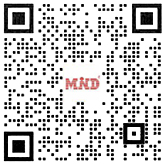RFID temperature sensor labels are essential tools in the cold chain industry, ensuring the integrity of temperature-sensitive products such as pharmaceuticals, food, and biologics during storage and transportation. These labels combine RFID (Radio-Frequency Identification) technology with temperature sensing capabilities to provide real-time monitoring and data logging. Here’s an overview of their key features and benefits:
Key Features:
Temperature Monitoring:
Continuously monitor and record temperature throughout the supply chain.
Typically have a wide temperature range suitable for cold chain applications (e.g., -20°C to +40°C or broader).
RFID Technology:
Enable wireless communication for easy data retrieval without line-of-sight.
Can be passive (powered by the RFID reader) or active (with a built-in battery for longer-range communication).
Data Logging:
Store temperature data at regular intervals for compliance and analysis.
Some models offer cloud-based data storage for remote access.
Alerts and Notifications:
Trigger alarms if temperatures exceed predefined thresholds, ensuring immediate corrective action.
Durability:
Designed to withstand harsh environments, including moisture, shock, and extreme temperatures.
Compliance:
Meet regulatory standards for cold chain management, such as FDA, EU GDP, and WHO guidelines.
Reusable or Single-Use:
Some labels are reusable, while others are designed for single-use applications.
Benefits:
Enhanced Product Safety:
Ensures that temperature-sensitive products remain within specified ranges, maintaining their efficacy and safety.
Real-Time Visibility:
Provides real-time tracking and monitoring, reducing the risk of spoilage or damage.
Improved Efficiency:
Automates temperature monitoring, reducing manual labor and human error.
Regulatory Compliance:
Helps meet strict industry regulations and provides auditable data for inspections.
Cost Sas:
Reduces losses due to spoiled or compromised products and minimizes insurance claims.
Traceability:
Enhances supply chain transparency by providing a complete temperature history of the product.
Applications:
Pharmaceuticals: Monitoring vaccines, biologics, and other temperature-sensitive drugs.
Food Industry: Ensuring the freshness and safety of perishable goods like dairy, meat, and seafood.
Logistics: Tracking temperature conditions during transportation.
Healthcare: Monitoring blood bags, tissues, and other medical supplies.
Considerations When Choosing an RFID Temperature Sensor Label:
Temperature Range: Ensure it covers the required range for your application.
Battery Life: For active RFID labels, consider the battery lifespan.
Read Range: Choose a label with an appropriate read range for your use case.
Data Storage: Evaluate the amount of data the label can store and its compatibility with your systems.
Cost: Balance the cost with the features and benefits provided.
By integrating RFID temperature sensor labels into the cold chain, businesses can significantly improve product quality, compliance, and operational efficiency.
Post time: Feb-05-2025





